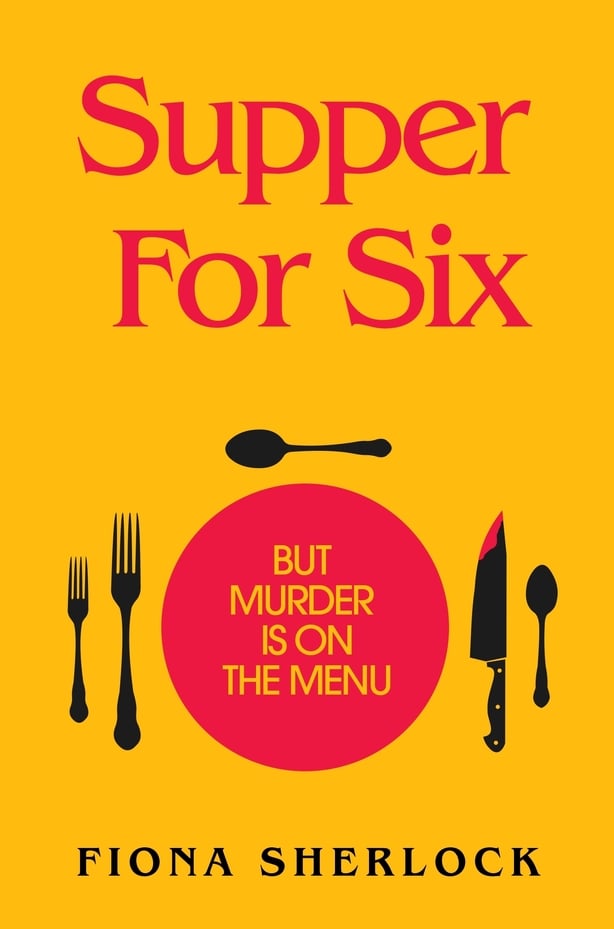We present an extract from Meath-based author Fiona Sherlock's newest whodunnit, Supper For Six.
From the author of Twelve Motives for Murder comes another immersive murder mystery, this time, told through the lens of a podcast. When Lady Anderson invites five guests, including well-loved, maverick detective Elizabeth Chalice, to her apartment in Bruton Square, Mayfair, none of the guests know why they have been summoned. And it isn't long before dinner turns deadly...
London, 1977. A grand house in Mayfair. An aristocrat's dinner party begins with avocado salad but will conclude with two stone-cold dead bodies. It’s the seventh of April, and white blossoms gather in the gutter outside 26 Bruton Square, the residence of Lord and Lady Anderson. Lady Anderson is hosting supper for her closest friends, for the first time. No one is expecting any other guests. Before the evening is out, the elaborate plasterwork and Chippendale furniture will be lost to a blaze, and along with it, any forensic evidence. Only the word of her four remaining guests can explain what happened that evening. But can any of them be trusted?
Although overshadowed in popular consciousness by the disappearance of Lord Lucan three years earlier, the events that took place behind the glossy blackdoor of the Mayfair mansion utterly changed the lives of the guests at Lady Sybil Anderson’s dinner party.
To lose one Lord Anderson may be regarded as a misfortune. To lose both looks like carelessness. Welcome to Supper for Six. I’m your host Felix Caerphilly, an investigative journalist. In this era of true crime, podcasters exhume the carcasses of old corpses searching for an inch of gristle to examine for hungry listeners. It’s June 2023, and I’ve been working on the Anderson case for the past forty-five years, since I was a cub reporter for the British Herald. My suitcase is full of tapes with the suspects statements – I have been obsessed with unravelling what truly happened to Lord Anthony Anderson who died in 1977. That’s where we begin.
Anthony Anderson was a controversial figure in the late 1970s, reputed as a dilettante playboy. A compulsive gambler, in the months before his death Anderson racked up enormous debts and was at risk of losing his home in London. A connoisseur of fine clothing, in the weeks after his death it was reported that in the first three months of 1977 alone, he had spent over £30,000 on custom-made suits and shoes, which he refused to wear more than once. His father may have been a hard-working businessman born into a lower-middle-class family who ascended to the rank of noble through his contribution to national security, but his son certainly was not.
The inquest into Anderson’s death was delayed until 1978 in order not to overshadow the Queen’s Silver Jubilee year. By the time the coroner’s court heard the details in January of 1978, it was met with little sympathy or interest from the British public, who were then dealing with double-digit inflation and high rates of unemployment. For this case wasn’t the first time an aristocratic murder had hit the headlines. Just four years earlier, Lord Lucan had disappeared after his suspected murder of his children’s nanny, Sandra Rivett. Lucan was spotted in the glamorous spots he used to frequent years earlier, from Monaco to St Moritz, evading the proper administration of justice. Eventually in 2016, he was declared dead. Even today, the mystery of his disappearance is unsolved. In many ways, Anderson resembled Lucan, with his Mayfair residence and propensity to spend money faster than it came in.
As far as the British public were concerned, Anthony Anderson was another rotten apple undeserving of sympathy from those whose lives were hard enough. For in 1977, Labour’s James Callaghan served as Prime Minister and the Yorkshire Ripper claimed his fifth victim, a sixteen-year-old shopgirl. 119 people died when firefighters went on strike that winter. Tensions over Northern Ireland spilled into mainland Britain, with constant bomb threats from the IRA. The Irish aspect to this case is one we will return to. But the most striking thing about how this case was perceived at the time, was the sense that another profligate elite had got his just deserts for life in the fast lane. The true events of that night did not receive the critique or commentary many expected. Even with a case of mistaken identity, the story failed to get traction.
But I was hooked on the tale from the beginning. As an idealistic teenager, I wanted to launch my journalistic career by solving this mystery. Initially an editor at the Herald gave me a bit of free rein to poke around in the case. I’d nabbed a number of exclusive interviews and gained his confidence. What I hadn’t told him was that I had come into a bit of money. I heard that Elizabeth Chalice had a number of tapes from the evening, and I decided to pay for her help.
FRANCOIS:
There was no doubt Anthony was murdered.
AGAPANTHUS:
The rest of us were excluded from society. It was all anyone could talk about.
There you hear recordings of Francois and Agapanthus Langford, both long-time friends of the younger Anthony Anderson. This high-flying pair, a lawyer and a doctor, have refused to speak since my initial investigation a few months after the crime. Another couple, Chrissy and Jeremy Crowley, were invited to dinner that night, along with private investigator Elizabeth Chalice. Returning to England after three decades in Italy, Elizabeth sought a fresh start. Her funds were exhausted. She reluctantly accepted a thousand pounds to share her recordings with me a few months afterwards. Nowadays, it’s essential to be transparent about these arrangements, but there were different standards to tabloid journalism in the 1970s.

Supper For Six is published by Hodder & Stoughton

